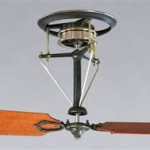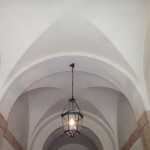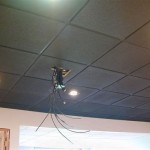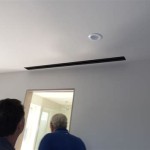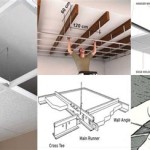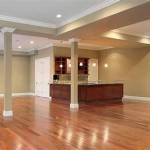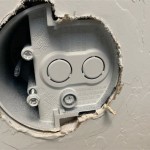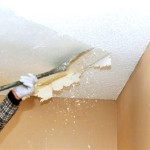How To Create Striking False Ceiling Designs
False ceilings, also known as dropped ceilings or suspended ceilings, are secondary ceilings installed below the main structural ceiling of a room. They offer a multitude of aesthetic and functional benefits, ranging from concealing unsightly wiring and ductwork to improving acoustics and energy efficiency. The design possibilities for false ceilings are virtually limitless, allowing for creative expression and customization to suit any space and style. This article provides a comprehensive guide on how to create striking false ceiling designs, covering essential considerations, design elements, material options, and installation techniques.
Planning and Preparation: Laying the Groundwork for Success
Before embarking on a false ceiling project, thorough planning and preparation are crucial to ensure a successful outcome. This involves assessing the existing space, defining the desired design goals, and carefully selecting the appropriate materials and installation methods.
Space Assessment: A comprehensive assessment of the existing space is the first step. This includes measuring the dimensions of the room, noting the height of the existing ceiling, and identifying any obstructions such as pipes, wires, or ductwork. The available space above the dropped ceiling will influence the design possibilities and the choice of materials. A lower ceiling height may necessitate slimmer designs, while a higher ceiling provides more flexibility for incorporating elaborate features.
Design Goals: Defining the desired design goals is essential for guiding the entire process. This involves determining the primary function of the false ceiling, such as concealing utilities, improving acoustics, enhancing lighting, or creating a specific aesthetic. Consider the overall style of the room and how the false ceiling will complement the existing décor. Gather inspiration from various sources, such as design magazines, online platforms, and architectural showcases, to visualize the desired outcome.
Material Selection: The choice of materials is paramount to the overall look, performance, and durability of the false ceiling. Common materials include gypsum board, mineral fiber, metal, wood, and PVC. Each material offers unique characteristics in terms of cost, aesthetics, acoustic performance, fire resistance, and ease of installation. Gypsum board is a versatile and affordable option, suitable for a wide range of designs. Mineral fiber tiles offer excellent acoustic properties, making them ideal for offices and theaters. Metal ceilings are durable and offer a modern aesthetic. Wood ceilings provide warmth and natural beauty, while PVC ceilings are lightweight, moisture-resistant, and easy to clean.
Lighting Integration: Lighting plays a critical role in enhancing the aesthetics and functionality of a false ceiling. Consider the type of lighting fixtures to be used, such as recessed lights, pendant lights, strip lights, or spotlights. Plan the placement of the lights carefully to achieve the desired illumination levels and create the desired ambiance. Integrate dimming controls to adjust the lighting according to different needs and moods. Ensure that the wiring for the lighting fixtures is properly concealed and routed within the false ceiling structure.
Budget Allocation: Establishing a realistic budget is crucial for managing the financial aspects of the project. Consider the cost of materials, labor, lighting fixtures, and any necessary permits or inspections. Obtain quotes from multiple contractors to compare prices and ensure that the budget aligns with the desired design goals. Allocate a contingency fund to cover unexpected expenses or design changes.
Key Design Elements: Shaping the Visual Appeal
The design elements of a false ceiling contribute significantly to its overall visual appeal and impact. These elements include shape, texture, color, and pattern, all of which can be manipulated to create a desired effect.
Shape and Form: The shape and form of the false ceiling can dramatically alter the perception of the room's dimensions and character. Simple flat ceilings create a clean and minimalist look, while curved or vaulted ceilings add a touch of elegance and sophistication. Coffered ceilings, with their recessed panels, introduce depth and visual interest. Layered ceilings, with multiple levels and varying heights, create a dynamic and contemporary feel. The choice of shape and form should be carefully considered in relation to the room's architecture and the desired design aesthetic.
Texture and Materiality: The texture and materiality of the false ceiling can add tactile and visual richness to the space. Smooth surfaces reflect light and create a sense of openness, while textured surfaces absorb light and add depth. Consider incorporating different materials and finishes to create a sense of contrast and visual interest. For example, combining smooth gypsum board with textured wood panels or metallic accents can create a stunning visual effect. The choice of texture and materiality should complement the overall design style and create a cohesive look.
Color and Finish: Color plays a vital role in influencing the mood and atmosphere of a room. Light colors tend to make a space feel larger and brighter, while dark colors create a sense of intimacy and drama. Consider using different colors to highlight specific areas or features of the false ceiling. Matte finishes absorb light and create a soft, understated look, while glossy finishes reflect light and add a touch of glamour. The choice of color and finish should be carefully considered in relation to the room's lighting and the desired design aesthetic.
Patterns and Ornamentation: Patterns and ornamentation can add intricate detail and visual interest to a false ceiling. Geometric patterns, such as squares, rectangles, or triangles, create a sense of order and structure. Organic patterns, inspired by nature, add a touch of softness and fluidity. Consider incorporating decorative moldings, cornices, or medallions to add a touch of elegance and sophistication. The choice of patterns and ornamentation should be carefully considered in relation to the room's architectural style and the desired design aesthetic.
Installation Techniques: Ensuring Quality and Durability
Proper installation is crucial to the long-term performance and durability of a false ceiling. This involves selecting the appropriate suspension system, accurately aligning the ceiling panels, and ensuring proper ventilation and access.
Suspension System: The suspension system provides the structural support for the false ceiling. Common types of suspension systems include exposed grid systems, concealed grid systems, and direct-fix systems. Exposed grid systems consist of a visible metal grid that supports the ceiling panels. Concealed grid systems hide the grid behind the ceiling panels, creating a seamless look. Direct-fix systems attach the ceiling panels directly to the existing ceiling structure. The choice of suspension system depends on the type of ceiling panels, the desired aesthetic, and the structural requirements of the space.
Panel Alignment: Accurate alignment of the ceiling panels is essential for creating a visually appealing and structurally sound false ceiling. Use a laser level or a chalk line to establish a level reference line around the perimeter of the room. Install the suspension grid according to the manufacturer's instructions, ensuring that it is perfectly level and aligned. Carefully position the ceiling panels within the grid, ensuring that they are aligned and flush with each other. Use shims or spacers to adjust the panel height as needed.
Ventilation and Access: Proper ventilation is essential for preventing moisture buildup and maintaining air quality within the false ceiling space. Install ventilation grilles or vents to allow air to circulate freely. Provide access panels or hatches to allow for inspection and maintenance of the utilities and equipment concealed within the ceiling space. The access panels should be discreetly integrated into the ceiling design and easily accessible.
Lighting Integration: Integrating lighting fixtures seamlessly into the false ceiling requires careful planning and execution. Pre-wire the lighting fixtures before installing the ceiling panels. Cut openings in the ceiling panels to accommodate the lighting fixtures, ensuring that the openings are the correct size and shape. Secure the lighting fixtures to the suspension grid or the ceiling panels, following the manufacturer's instructions. Connect the wiring to the power source, ensuring that all connections are properly insulated and grounded.
Acoustic Considerations: If improved acoustics are a primary design goal, consider incorporating acoustic panels or sound-absorbing materials into the false ceiling. Acoustic panels are designed to absorb sound waves and reduce reverberation. Sound-absorbing materials, such as mineral fiber or fiberglass insulation, can be installed within the ceiling space to dampen sound transmission. The choice of acoustic materials depends on the desired level of sound absorption and the specific acoustic requirements of the space.
Safety Precautions: Safety should always be a top priority during the installation of a false ceiling. Wear appropriate personal protective equipment, such as safety glasses, gloves, and a dust mask. Use proper lifting techniques to avoid injuries. Work in a well-ventilated area. Follow all safety guidelines and regulations. If not comfortable performing the installation, it is best to hire a qualified professional to ensure a safe and successful outcome.
By carefully considering these key elements and following the recommended techniques, one can create striking false ceiling designs that enhance the aesthetics, functionality, and value of any space. Consistent planning, attention to detail, and adherence to safety guidelines are critical for achieving a successful and long-lasting result.

Technique To False Ceiling Installation Contractorbhai

False Ceiling Designing And Modular Kitchen Ashiyaa Interio

How To Make False Ceiling Designs For Living Room Gypsum Design

How To Make False Ceiling At Home Bed Room Diy Gypsum Board

Beauty From Above Innovative False Ceiling Design Ideas That Make A Statement Et Edge Insights

How To Make False Ceiling Designs For Living Room Gypsum Design

Best False Ceiling Designs For Living Room Design Cafe

False Ceiling Designs Great Way To Make Your Roof Mind Blowing

20 Stunning False Ceiling Design Ideas Designs Types Amp Materials

False Ceiling The Slab That Transformed Home Decor Hipcouch Complete Interiors Furniture
Related Posts

